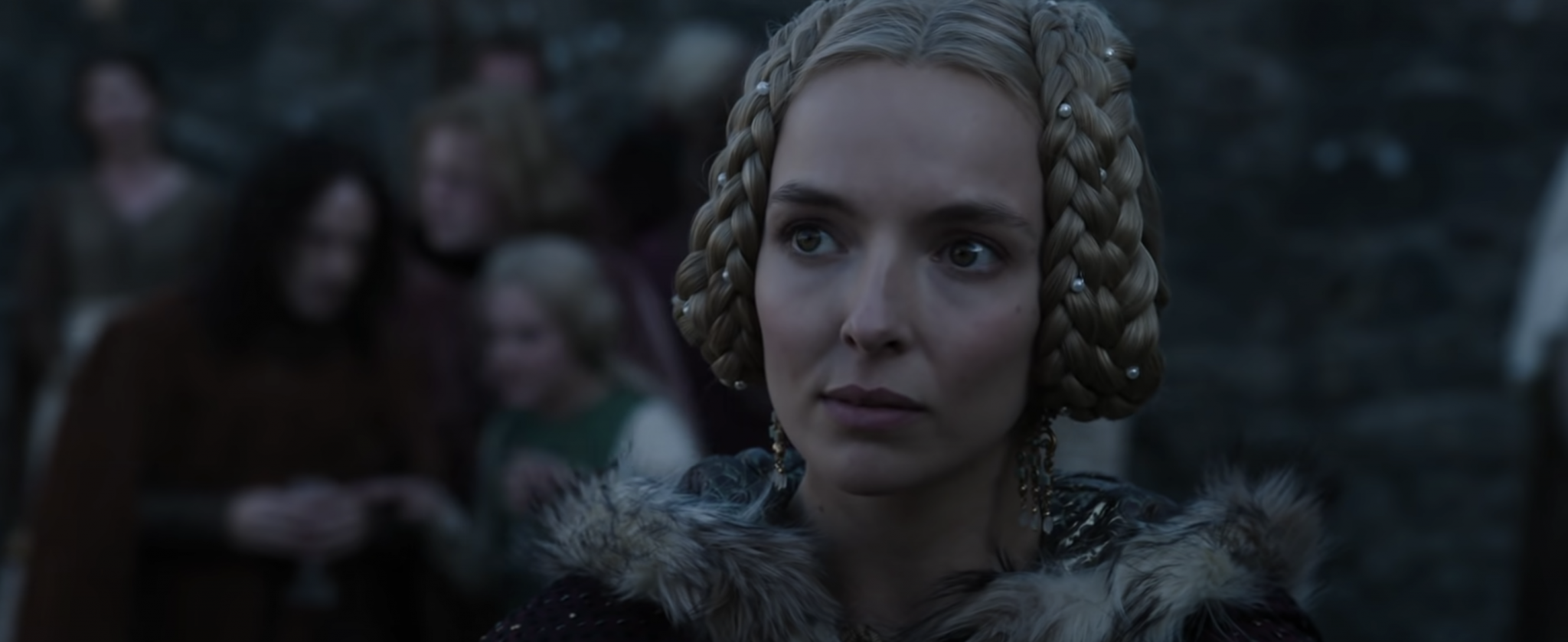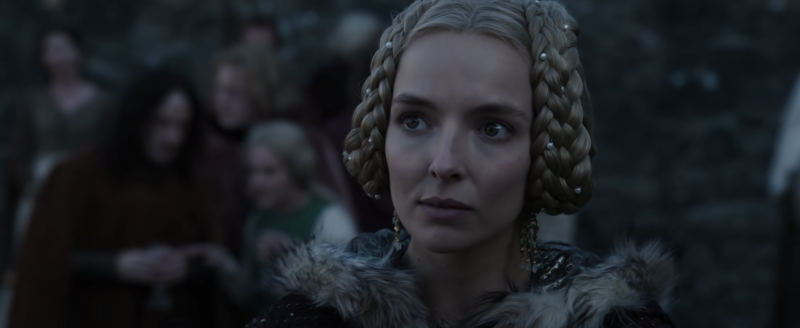The Last Duel – Gruesome truths and modern connections

Trigger warning: this article contains mentions of sexual assault.

The Last Duel is based on the book of the same name by Eric Jager. Detailing the last officially recognized judicial duel in France, the novel is based on a true story of a woman’s fight to have her sexual assaulter punished for his vile actions. The film is directed by Ridley Scott and features Nicole Holofcener, Ben Affleck and Matt Damon as writers.
This woman, Marguerite de Carrouges, is played with silent strength and masterful skill by Jodie Comer. She is at the heart of this film and provides the strongest performance. Her struggle to have her voice heard as a woman during the 14th century is heartbreaking and demonstrates the long road women have faced to be listened to.
Matt Damon stars as Sir Jean de Carrouges, Marguerite’s husband. Damon’s performance is strong but not as noteworthy as Comer’s. Of note is the terrible wig Damon is tasked with wearing. While being supposedly fitting for the time, Damon does look like the reject of a pop-punk band.
Once more, Adam Driver stars as a villain – this time, he portrays the ever charming and dangerous Jacques Le Gris. When it comes to wigs, Driver got away the easiest. Overall, his performance is strong, but doesn’t appear to be a stretch for his abilities. His portrayal of Le Gris as the charming and dangerous “villain” of the story is well done, but not anything that audiences haven’t seen him do before.
Ben Affleck’s portrayal of the slimy womanizer Pierre d’Alençon is another highlight of the film. With his short blonde wig, it may even take audiences a minute to recognize Affleck at all. He and Driver play well off each other as they spend time partaking in 1300s-esque womanizing and revelry.
Like The Green Knight, The Last Duel is split into chapters. With three chapters split between Sir Jean, Sir Jacques and Marguerite. This separation was efficient and seeing the events of the film through the eyes of each character was effective.
It was interesting to observe how each character saw each event of consequence that took place. Considering the film’s focus on sexual assault, it also demonstrated how Marguerite’s account was the truth and the perspective that the audience should believe.
In addition, the film’s lighting feels natural and fitting for the time. Each scene was lit with a soft wash and each key emotion was visible while still being believable for the period.
A key cinematographic moment takes place in the film’s final act, where Damon hits Driver’s shield into the camera. In this moment, the camera jars backward and adds to the tension of the moment. The other battle scenes in the film are similarly chaotic, the cinematography adding to the disorientation being experienced by the soldiers. While there are very few battle sequences in the film, they are shot well.
One criticism of the film that cannot be overlooked is the varied accents present throughout. Each member of the central cast changes their accent frequently throughout the film’s runtime, proving to be very distracting. This is something that could have been resolved easily in the film’s production schedule but was clearly forgotten about.
However, audiences must take note of the film’s troubling content beforehand. The sexual assault scene present in the film is shown twice, and while both individuals are clothed it is still very disturbing. Those who are survivors of sexual violence should tread carefully and determine whether they will be able to handle this portrayal. The Last Duel is ultimately worth seeing in theatres. As long as audiences are aware of the potentially triggering content, it provides an enjoyable viewing experience and seeing Damon and Affleck on screen together once more should be celebrated.

